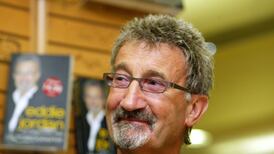The outstanding achievement of the psychiatrist Dr Humphry Osmond, who has died aged 86, lay in helping to identify adrenochrome, a hallucinogen produced in the brain, as a cause of schizophrenia, and in using vitamins to counter it.
This breakthrough established the foundations for the orthomolecular psychiatry now practised around the world.
British by origin, but resident in North America for more than half a century, he also saw value in the wider use of hallucinogens, whether to increase doctors' understanding of mental states; architects' appreciation of how patients perceive mental hospitals; or general imaginative and creative possibilities, notably through his association with the writer Aldous Huxley. A cultural by-product of their exchanges was the coining of the adjective "psychedelic".
Sensing little support for his work in England, Osmond left in 1951 to accept an appointment at a psychiatric hospital in Saskatchewan. It was a desolate place, but he found ample research funds from the Canadian government and the Rockefeller Foundation.
Earlier, at the St George's Hospital, Tooting, London, he and fellow researcher John Smythies had examined the experience induced in normal volunteers by mescaline, the active hallucinogen extracted from the peyote plant, and realised that in many ways it was similar to people's experience of schizophrenia. It then struck them that mescaline is similar in structure to adrenaline, and that the schizophrenic body might contain a substance with the properties of mescaline, and somehow related to adrenaline.
The psychiatric hospitals in Saskatchewan housed about 5,000 patients, of whom half were schizophrenic. Admission was for them a life sentence, and conditions were appalling. The work of Osmond and Smythies, who also came to Canada, offered a way forward: the adrenochrome hypothesis was reported by both men and Abram Hoffer in a paper in the Journal of Mental Science in 1954.
They contended that in schizophrenic patients there was an abnormal production of adrenochrome, a derivative of adrenaline, and that this played a role in the genesis of the condition. Three questions presented themselves: was adrenochrome really formed in the body, was it a hallucinogen, and would an antidote be therapeutic for these patients? The answer to all three was yes.
To further their understanding of the psychology of schizophrenia, their biochemical team worked on adrenochrome, to establish how it was made and what it did. Then the clinical team conducted the first double-blind controlled experiment in psychiatry. They proved that adding one vitamin, B3 (niacin), to diets doubled the recovery rate of acute or early schizophrenic patients over the course of two years, and the results were confirmed by research in the US.
Convinced that they had discovered a very important, new and safe way of helping patients, in 1966 they were joined by the double Nobel laureate Linus Pauling, who first employed the term orthomolecular psychiatry for the technique in a paper in the journal Science in 1968.
Osmond approached other disorders with equal originality. The problem for chronic drinkers was complementary to that of schizophrenics, but rather the reverse: they needed to experience the hallucinations of delirium tremens in order to give up drinking. So for those whose brains had not generated the necessary chemicals, from 1956 onwards they adopted a hallucinogenic treatment. Out of more than 2,000 alcoholics in four institutions, 40 per cent recovered.
Osmond's extensive list of papers and books, often co-authored, included The Chemical Basis Of Clinical Psychiatry (1960) and How To Live With Schizophrenia (1966), Psychedelics: The Uses And Implications Of Hallucinogenic Drugs (1970), and Models Of Madness, Models Of Medicine (1974).
Born in Surrey, Osmond went to Haileybury school, Hertfordshire. Medical studies at Guy's Hospital, London, led to second World War service as a surgeon-lieutenant in the Navy, and training as a ship's psychiatrist. After the war, he obtained a psychiatric post at St George's.
Once his work had found recognition and resources in Canada, his observation of the chemical similarity of mescaline and adrenaline came to the notice of Aldous Huxley. Drug use had been a feature of the novelist's Brave New World (1932), and he was keen, in 1953, to offer himself as a guinea pig.
Osmond was reluctant: he did not "relish the possibility, however remote, of finding a small but discreditable niche in literary history as the man who drove Aldous Huxley mad". Fortunately the writer found the experience mystical and revelatory.
Osmond asked Huxley's advice about describing the effects of mescaline. Huxley replied with "phanerothyme" from Greek words meaning "to show" and "the spirit", and he contributed a rhyme: "To make this mundane world sublime/ Take half a gram of phanerothyme."
Osmond instead chose "psychedelic", from the Greek for mind or soul and a form of the verb "to show", deloun. He added in a note back to Huxley: "To fathom Hell or soar angelic/Just take a pinch of psychedelic."
Nonetheless, Osmond had no enthusiasm for the drug excesses of the counterculture: to him, hallucinogens were "mysterious, dangerous substances, and must be treated respectfully", and he regretted the loss of medical opportunities caused by their ban by the end of the 1960s.
After Saskatchewan, he became director of the Bureau of Research in Neurology and Psychiatry at Princeton University, New Jersey (1961-71), and then went to the University of Alabama School of Medicine (1971-92).
He is survived by his wife, two daughters and a son.
Humphry Fortescue Osmond: born, July 1st, 1917; died February 6th, 2004









